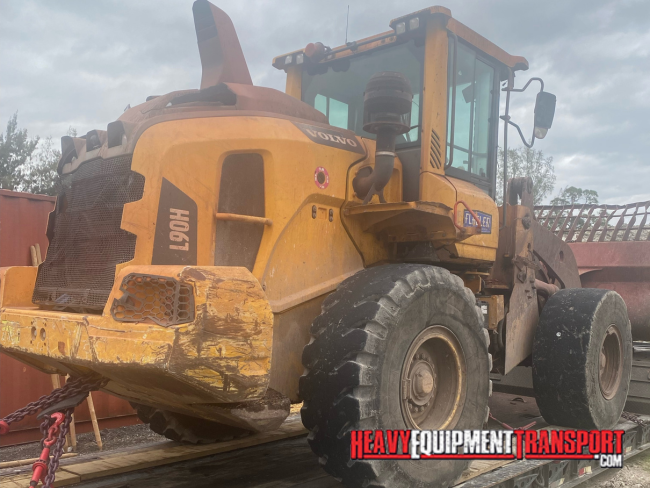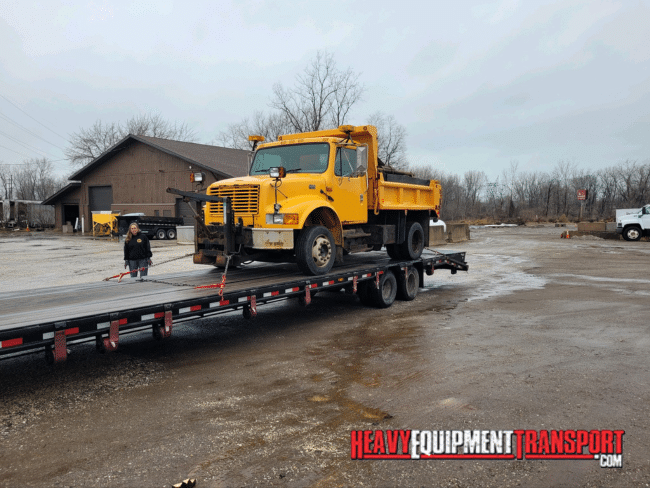Is It Better to Use a Crane or Forklift for Equipment Loading?

Francisca Olive / June 2023
When it comes to heavy equipment loading, choosing the right machinery is crucial for ensuring safety, efficiency, and accuracy. Cranes and forklifts are common alternatives for loading equipment; however, depending on the project’s requirements, each option offers a unique set of advantages and drawbacks. This article will try and settle the crane vs. forklift for equipment loading debate based on several criteria, including load capacity, mobility, and cost.
Forklifts
Consider a forklift to be a type of industrial truck. It has a lift at the front, so it can quickly move pallets and other items over short distances. Pallets and other products may be raised and lowered with the lift, making it easier to move them throughout a warehouse or other facility. A driver operates a forklift like a car driver controls a vehicle.

Pros of Forklifts
Forklifts are compact and maneuverable. Despite their size, forklifts can maneuver easily in confined spaces. Their maneuverability allows them to be used in a variety of settings, and they make lifting and moving heavy objects a breeze.
A wide range of forklifts is available, from small-capacity ones to those that can lift over 1,100 pounds. Whatever the size of your area, there is undoubtedly a forklift that will fit.
Cons of Forklifts
Forklifts usually require clear, spacious pathways. As forklifts are on wheels, they need wide aisles to maneuver and must follow a clear path.
Additionally, forklifts may sometimes need two people. While transporting a heavier weight, one person must operate the forklift while another holds the load steady.
When it comes to repairs, forklifts have a hefty price tag due to the recurrent wear and tear on parts like tires and hydraulics. Using battery-powered forklifts comes with additional costs for batteries and charging stations.
Transport Your Equipment Today
Heavy Equipment Transport is always available for a quote. Fill out the form or give us a call now! (888) 730-2951
Cranes
Overhead cranes consist of a horizontal beam that travels down the length of a warehouse’s area on tracks. They have a trolley and hoist that can pinpoint items on the warehouse floor, making it easy to make selections and move the goods to their proper locations.
Pros of Cranes
Forklifts can only stack things as high as the mast will allow them to, which means that products may need to be kept across a large area, whether on the floor of a warehouse or in a yard. An overhead crane’s increased hook height means less floor space is needed, making them a space-saver.
Electric motors are used in overhead cranes because they are more reliable and have a longer service life than gas motors or batteries. Cranes can last more than 30 years, but forklifts typically only last between 5 and 10 years, meaning you’ll save a lot of money on repairs, maintenance, and gasoline over the long haul.
Because an overhead crane only requires one operator, it is more efficient and cost-effective than a fleet of forklifts, trained forklift drivers, and a staff of maintenance professionals.
Cons of Cranes
The cost of buying an overhead crane is more than that of a forklift. Also, forklift loading is easier in tight, compact warehouse locations than crane loading.

Crane vs. Forklift for Equipment Loading
➤ Safety
Forklifts are not as safe as overhead cranes for several reasons. When the crane moves materials above the warehouse floor, there is greater ergonomics and better load control. Cranes are integrated into the building’s design, making it easy to move goods above the ceiling and around the building’s structural elements and storage racks without risking damage or injury.
While using forklifts, there is a higher possibility of running into warehouse employees or other floor objects. The potential for damaged goods and inappropriate stacking during shipment is also higher.
➤ Customization
Overhead crane installation is beneficial since it can be adapted to the specifics of each warehouse. For this reason, they last longer than most alternative material handling methods and require less upkeep. Compared to a forklift’s 10–15 year lifespan, overhead cranes can last up to 65 years before retirement.
➤ Cost
Overhead cranes are more expensive than forklifts, but they can pay for themselves in the long run. A crane can last up to 65 years when properly cared for and maintained. On the other hand, forklifts could only last ten years. Forklifts have a lower initial cost, but they don’t last nearly as long as cranes.
Crane vs. Forklift for Equipment Loading Assistance: Which is Better?
Forklifts would be an excellent option for your moving needs, providing your facility has sufficient open floor space. They are helpful for swiftly transporting cargo inside a large facility or between storage areas and the loading dock.
If the floor space in your facility is restricted and the items are stacked close to one another, this most likely indicates that there are many blind spots and insufficient room to drive. As far as safety and efficiency go, cranes excel under these conditions. Lifting heavy objects high above a busy warehouse or distribution center reduces the likelihood of injuries or damage to property.

William Thomas
Heavy Transport Specialist
Being able to lead a team of such talented logistics agents has been a wonderful experience over the past ten years. If you would like to know anything more about the heavy equipment transport services we offer, don't hesitate to give us a call!